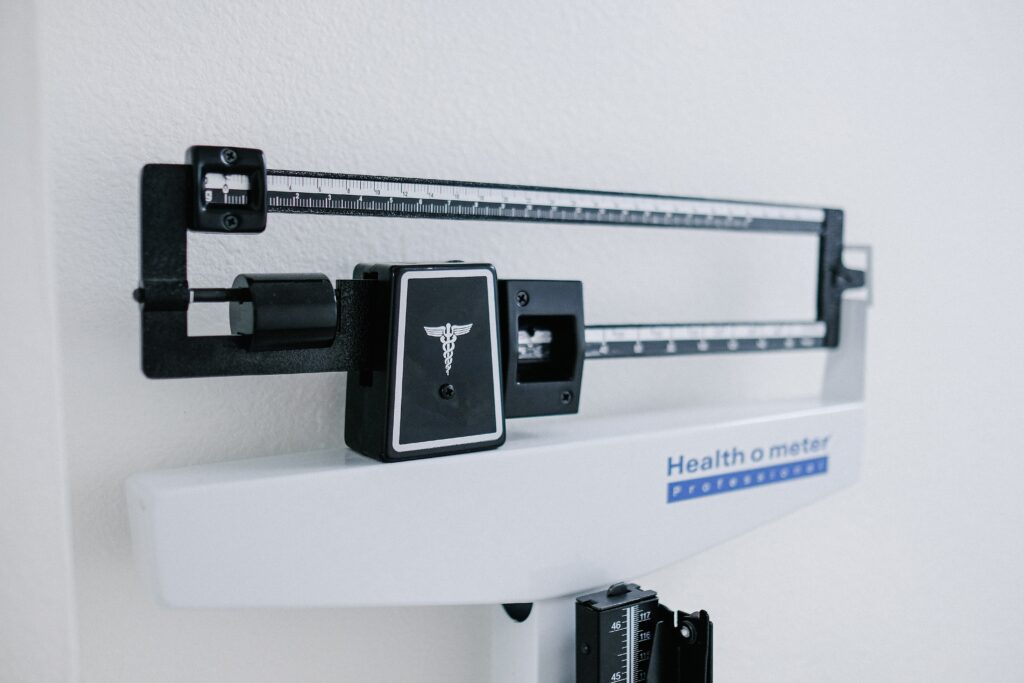The development of cardiovascular disease and type 2 diabetes have an association with metabolic obesity with normal body weight (MONW).
However, clinical practice does not diagnose MONW. In apparently healthy patients (without obesity) the measurement of insulin resistance or obesity is not widely applied nor does it have a defined consensus.
So, we tend to associate this metabolic disorder with a higher mortality rate from cardiovascular and other related diseases. Also, it is necessary to create appropriate diagnostic models that identify people with “normal weight” and these metabolic abnormalities. On this depends prevention and treatment.
Check here for an overview of the MONW
Introduction
It is difficult to maintain good health with this modern lifestyle that we lead. Therefore, obesity has diverse components: sedentary work, little physical activity, inadequate diet, irregular meals, snacking between meals, and overeating at night.
The WHO defines obesity as an abnormal or excessive accumulation of fat that represents a risk to health. There is worrying data for 68.5 million people in 195 countries between 1980 and 2015. Also, Childhood and adult obesity rates doubled in 73 countries, with most experiencing steady increases.
By 2030 one in two adults will be obese. One in four adults will be severely obese.
Any diet can lead to obesity when the body receives too many nutrients. Excess triglycerides are in adipocytes (fat cells). Hypertrophy and proliferation of adipocyte cells can occur as a result of increased fat mass.
Several diseases are related to excess body fat:
- Metabolic syndrome (MetS)
- Type 2 diabetes mellitus (DM2)
- Hypertension
- Ischemic heart disease
- atherosclerosis
- hyperlipidemia
- Non-alcoholic fatty liver
- Osteoarticular, musculoskeletal and respiratory complications.
Furthermore, obesity is known to be a risk factor for breast cancer, uterine cancer, esophageal cancer, and kidney cancer as well.
Obesity is a heterogeneous disorder

In terms of adipose tissue distribution, metabolic profile, and cardiovascular and metabolic risk, obesity is characterized by interindividual variability. Also, you are more likely to develop T2DM and CHD with excessive abdominal fat storage. Compared with peripheral or gluteal-femoral obesity.
There are significant differences between subcutaneous adipose tissue (SAT) and visceral adipose tissue (VAT). In terms of anatomical, cellular, molecular, physiological, clinical and prognostic characteristics. Human health has a negative effect due to an excess of visceral adipose tissue. Although both types of adipose tissue are responsible for insulin resistance.
Visceral adipose tissue exhibits much greater metabolic and hormonal activity, with a probability of lipolysis. This is also associated with DM2, glucose intolerance, hypertension and cardiovascular diseases.
Visceral fat has become a topic of interest since 1980. Since a patient with symptoms of metabolic syndrome was observed, despite a normal body mass index (BMI). Obesity of this type is defined as metabolically obese normal weight (MONW).
Symptoms of thin obesity
The term “skinny fat” refers to a body with a relatively low amount of muscle tissue and a high percentage of body fat.
There is a common misconception that slim bodies indicate good health. Even with a “normal” BMI, people with higher body fat and lower muscle mass can develop:
- insulin resistance
- high cholesterol
- high blood pressure
What would “thin fat” look like?
So, the term “skinny fat” does not have a standardized meaning and is not a medical term. It has different interpretations.
Despite having a “normal” BMI, it is associated with less muscle tone and strength, and a relatively high percentage of body fat. People who are not physically fit have often this term.
It’s possible to have a lot of visceral fat and little muscle definition if you’re “skinny fat.”
What causes “thin fat” people?
Each person’s body is unique. In fact, if the percentage of body fat is higher and the muscle mass is lower, it may be a genetic predisposition.
Body size also takes into account factors such as exercise and nutrition habits, age, and hormone levels.
Important factors against obesity: exercise and diet
Muscle building is stimulated by anabolic hormones, released during exercise. The risk of diabetes can also be reduced with exercise, as it increases insulin sensitivity.
Body composition and fat storage have negative effects with hormonal changes, without regular exercise.
Your body composition can also have a negative effect with a diet high in refined sugar. Obesity and sugar consumption are related.
It is difficult to measure whether skinny fat is more prevalent in certain sexes, it is subjective.
Aging and hormonal imbalances
Hormonal changes make it difficult for older adults to maintain muscle. They are then at the greatest risk of loss of muscle mass (sarcopenia) and increased body fat.
The change in body fat storage has hormonal imbalances. After menopause, estrogen levels decrease fat mass increases, and visceral fat storage in the abdomen increases.
Is anyone at risk of being “skinny fat”?
Those who do not exercise regularly or eat an unbalanced diet may be at increased risk of diabetes, stroke, and cardiovascular disease.
There are five main risk factors for this condition:
- high blood pressure
- high blood sugar levels
- excess fat around the waist
- high triglyceride levels
- low levels of good HDL cholesterol
The risk of death from cardiovascular disease is higher in metabolically obese and normal-weight people older than 65 years.
The combination of low muscle strength and muscle mass and a large amount of fat can also lead to cognitive decline.
Can your diet cause you to have “thin obesity”?
Your body produces insulin when you eat sugary foods. Then, these transport sugar to fat and muscle cells for storage.
Insulin resistance occurs when your body stops responding to insulin and these levels are chronically elevated.
Protein and other nutrients are essential to build muscle tissue efficiently. Insufficient nutrients in your diet can prevent your body from building muscle.
Recommended dietary measures
You can improve your body composition:
- Consume whole grains, fruits, and vegetables for most of your carbohydrate needs.
- Be sure to consume protein.
- Limit the consumption of sugary or high-calorie drinks.
- Minimize sugar intake.
- Reduce your consumption of ultra-processed foods: cakes, sweetened cereals and chocolate bars.
- also, after exercise, eat protein-rich foods.
What lifestyle measures can help with obesity?
Stress and lack of sleep can contribute to increased body fat.
Improve your body composition with these do’s and don’ts:
Yes
- Invest time in stress-relieving activities and minimize your stress.
- Sleep at least seven hours a night.
- Make sure you exercise at least once a week.
- Limit your intake of refined sugar and follow a balanced diet.
- Take breaks from sitting for long periods of time.
No
- Go on a strict diet in an attempt to lose weight.
- Sleep less than seven hours a night.
- Consume alcohol in excess, either all at once or over time.
- Before going to bed, do not consume caffeine.
- Fast food is the main source of nutrition.
Are there exercises that can help this type of obesity?
Your body composition may improve if you exercise more.
So, there are no specific exercises or workouts known to reduce “skinny fat” body composition, contrary to what some websites claim. Make exercise a part of your weekly routine by finding an activity you enjoy.
Exercise 150 to 300 minutes a week at a moderate intensity.
Twice a week, do strength training for all major muscle groups.
Moderate intensity aerobic exercise
what you need to know
A person who has a “normal” BMI but has a large percentage of body fat and a small amount of muscle mass is considered skinny fat. Thin obesity.
The risk of diabetes and heart disease may be higher in people with this body composition.
You can improve or maintain your body composition by exercising regularly and eating a balanced diet.
Each person has a different definition of what constitutes a “healthy” weight. It may be more important to pay attention to your waist-to-hip ratio than your BMI or weight. This is more associated with heart disease and its consequences.
One way to reduce these risk factors is to follow a healthy lifestyle. So, the best way to achieve this is to exercise regularly, eat a healthy diet, and stop smoking.
However, you cannot control all factors. Also, healthcare providers can advise you if you have a family history of cardiovascular disease or are in an at-risk population.
Explore what Essential Medical Clinic has to offer:


